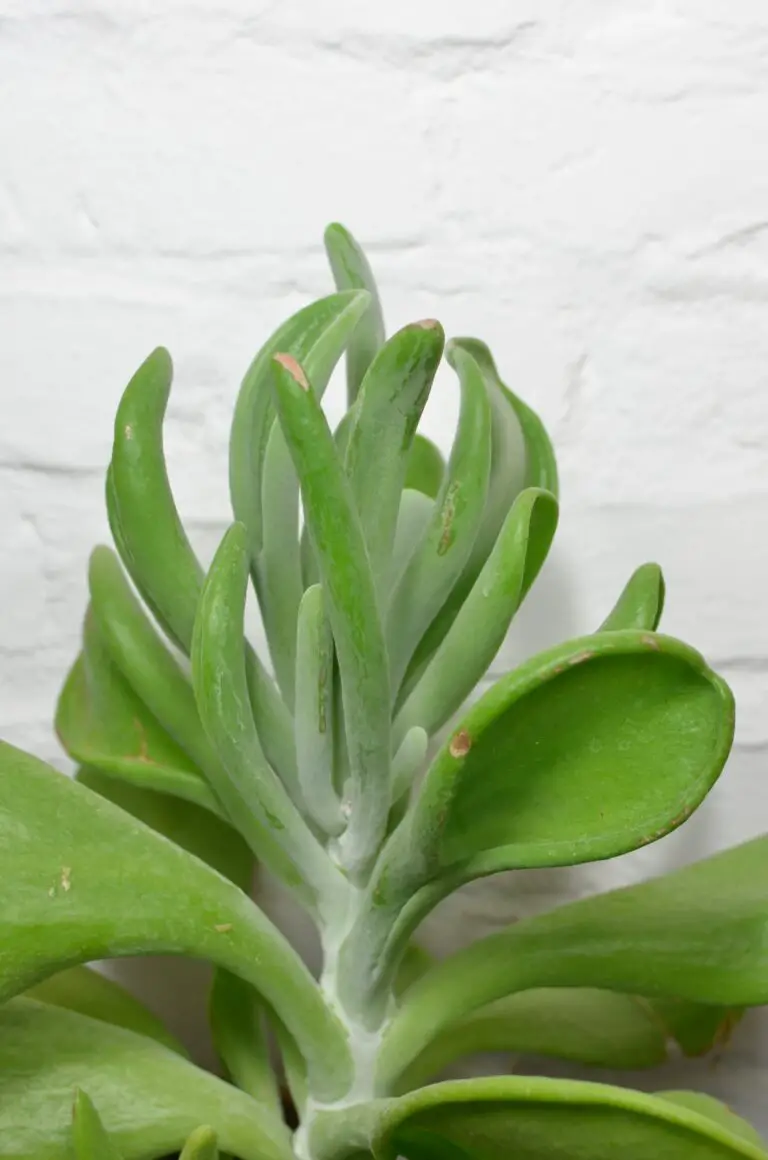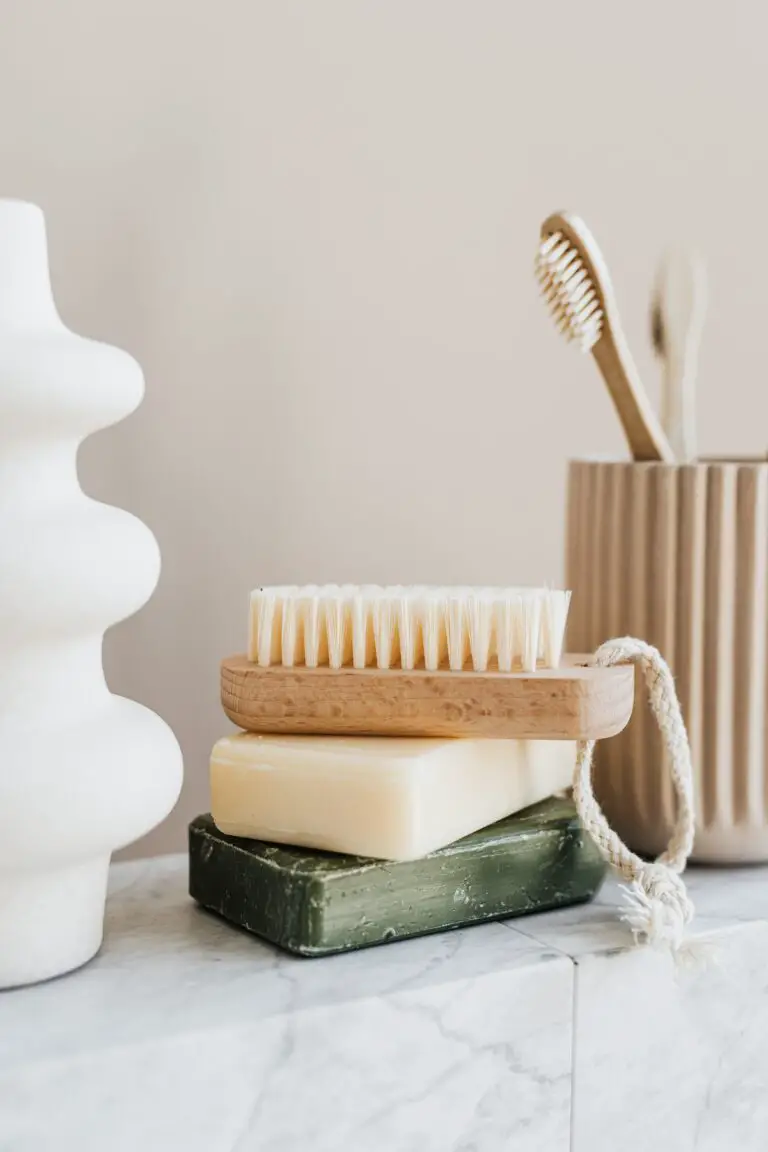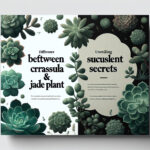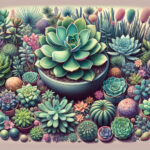Understanding the Jade Plant: Crassula’s Identity Revealed
Imagine walking into a local greenhouse, and your eyes catch the soothing green of succulent arrangements; amongst them, you notice the plump leaves of what appears to be the jade plant. But is it? The truth is, that sleek, glossy-leaved beauty might just be its botanical twin from the Crassula family. So, let’s bring the jade plant out from the shadows of confusion and shine a light on Crassula’s true identity.
Here’s the deal: when we talk about “jade plants,” we’re often referring to Crassula ovata, the poster child for this succulent squad. However, the rich family of Crassula encompasses many varieties that could easily be mistaken for the common jade plant. To clear up this case of mistaken identity, we need to delve into  the nuances of botanical nomenclature, which can be as intricate as the leaves of Crassula muscosa.
the nuances of botanical nomenclature, which can be as intricate as the leaves of Crassula muscosa.
Distinguishing between these succulent siblings comes down to checking out their features, like you’d notice a friend’s freckles or dimples. Crassula plants often have tighter, more geometric growth patterns compared to the laid-back, oval-leaf vibe of the traditional jade plant. It’s those subtle yet distinct traits that reveal Crassula’s individuality within the world of fleshy greens.
So, why the mix-up? Well, in the green-thumbed community, Crassula ovata is often casually called a jade plant because of its luscious, jade-colored leaves. But this name might lead you to overlook other equally deserving members of the Crassula family that don’t quite fit that moniker. Think of it like a family with multiple children where only one gets the spotlight.
Bottom line: the jade plant’s real deal is just one piece of a bigger botanical puzzle called Crassula. By understanding the subtle differences, we can appreciate each species for its unique charm and avoid the garden-variety faux pas of mislabeling our leafy friends.
Crassula Ovata vs. Other Varieties: Spotting the Differences
Confession time: haven’t we all mistaken a succulent for a jade plant at some point? Trust me, you’re not alone. The Crassula family is a master of disguise, and its most famous member, Crassula ovata, often gets all the attention as the “real” jade plant. But how does it truly stand out from its other leafy look-alikes? Let’s get up close and personal with these green gems!
First off, let’s talk leaves: Gazing at a Crassula ovata, you’ll notice those fleshy, glossy leaves that scream ‘jade plant’ louder than a howler monkey. Unlike some of its relatives sporting thinner, less voluptuous leaves, Crassula ovata’s leaves are like chubby little green pillows, tempting you to poke them (though, let’s keep it to admiring touches, shall we?).
Now, onto the growth pattern: Picture this – a Crassula ovata standing tall with its woody stems and a canopy of leaves, almost like a miniature tree in your living room. In contrast, other Crassula varieties might spread out like a green carpet, or grow in quirky, stacked patterns that defy the classic ‘tree’ look of our beloved ovata.
Here’s where it gets interesting — the flowers. When in bloom, Crassula ovata doesn’t hold back, boasting starry white or pale pink flowers that create a galaxy effect against the deep green leaves. While its cousins may also show off blooms, they often have differences in color, size, or frequency that help you play botanical detective and spot the true ovata in a lineup.
Curious to ensure your ovata thrives and possibly blooms? Check out this handy guide on When to Water Crassula Ovata: Secrets for Thriving Jade Plants, because even the real jade plant needs some TLC!
Speaking of care, here’s a pro tip: Crassula ovata is surprisingly drought-tolerant once established, and it’s not asking for a daily sip. This trait sets it apart from some other high-maintenance varieties that might throw a fit if you forget a watering session.

So, the next time you find yourself in a stand-off with a succulent, wondering, “Is this the jade plant of legend?” just remember these unmistakable signs. Crassula ovata, with its plush leaves, tree-like stature, and starry blooms, simply has a certain je ne sais quoi that others can’t quite mimic. Now, go forth and identify with confidence!
Myths and Misconceptions: The Name ‘Jade Plant’ Debunked
The term ‘Jade Plant’ is often casually tossed around in horticultural circles and garden centers worldwide, yet it leads us down a path of misconceptions. Let’s take a moment to clear the foliage of confusion and address why Crassula, a genus of succulent plants, so frequently bears this appellation, which is riddled with botanical inaccuracies.
Let’s be clear: not all succulents with fleshy, green leaves are jade plants. The real deal, the Crassula ovata, is indeed a member of the broad Crassula genus, which is often considered synonymous with jade due to its popularity. However, extending the ‘jade’ designation to other members of the Crassula genus is like calling all citrus fruits oranges – it’s simply not botanically sound.
So, why the mix-up? It’s likely a case of mistaken identity that’s been perpetuated through generations of plant enthusiasts. Take, for example, Crassula argentea, a close relative of our bona fide jade plant which, due to its similar appearance, often gets lumped into the ‘jade’ category. While it’s a convenient shorthand, it doesn’t account for the genus’s diversity.
This name-game has real-world implications. Imagine nurturing what you believe is a typical jade plant, only to find it reacts differently to your care routine. This isn’t your gardening skills at fault; it’s the mistaken identity of your Crassula, which may have different needs.
Thankfully, getting to know each Crassula species on a first-name basis is both rewarding and enlightening. By acknowledging the distinctive characteristics and care requirements of each species, we can elevate our plant parenting game and avoid the pitfalls of jade plant generalizations.
In the spirit of setting the record straight, let’s introduce a touch of reality into our green spaces. Scrutinize the leaves, examine the growth habits, and above all, ensure you know exactly which Crassula species graces your garden. It’s time to debunk the notion that ‘Crassula equals jade plant’ and embrace the rich variety that this genus holds.

To discover more about the Crassula genus beyond the jade moniker, consider delving into the enthralling world of succulents. Not only is such an exploration a botanical adventure, but it serves as a foundation for better understanding and appreciating these resilient wonders of nature.
Caring for Your Jade Plant: A Look at Crassula’s Needs
Think of your Crassula ovata as a botanical buddy; one that doesn’t mind a bit of neglect but thrives with the right touch. This sturdy succulent, often mistaken for the entire jade plant family, is a forgiving housemate with a few key needs to flourish. Let’s unwrap the mystery of keeping your green friend perky and prosperous.
Sunlight is the Crassula’s best friend. Much like a sunbather by the beach, this plant loves a good dose of sunshine. A south-facing window is the perfect spot for your Crassula, where it can bask in the glorious morning sun. However, remember that too much of a good thing can be harmful — direct, harsh afternoon light should be moderated to avoid a sunburn.
When it comes to watering your jade plant, there’s a fine balance to strike — think of it more like sipping a fine wine rather than guzzling down water during a marathon. Allow the soil to dry out completely between waterings, and then water deeply. This emulates the drought and downpour cycle that Crassula ovata adapts to in its natural habitat. Overly soggy soil can lead to root rot, the bane of many succulent enthusiasts.
The soil you choose for your Crassula is like selecting the right foundation for your home — vital for stability and growth. A well-draining, sandy soil mix prevents water from overstaying its welcome. Add in a bit of perlite or pumice to the mix, and you’re setting the stage for a thriving Crassula.
Temperature-wise, your Crassula is resilient, preferring a range from 60 to 75 degrees Fahrenheit (15 to 24 degrees Celsius). But don’t let its toughness fool you — sudden drops in temperature or frost can be as damaging to the plant as a sudden ice-bath would be for you. Keep your plant away from drafty windows during the cooler months to avoid shock.
While you’re absorbing this info, there’s even more to learn. Check out this article on ensuring succulent vitality, which can give you further insight into the delicate dance of watering these unique plants.
And remember, the charming Crassula doesn’t demand much. Provide it with a bit of attention and the right environment, and it will reward you with its plump, richly green leaves for years to come. Keep these tips in mind, and watch as your jade plant flourishes into a lush corner of serenity within your home or garden!

The Many Faces of Crassula: Exploring Species Diversity
Imagine stepping into a world where the lushness of green is accented by the bold, resolute forms of succulents as far as the eye can see. This isn’t just any botanical daydream; it’s the rich tapestry of the Crassula genus, a realm where the classic jade plant is but one of many remarkable characters. The “real” jade plant you’re familiar with, known as Crassula ovata, has a wealth of relatives that might just surprise you with their diversity and allure.
As we delve into this verdant family, you’ll encounter species that twist, trail, and tower. From the dainty Crassula capitella, with leaves that turn a fiery red when kissed by the sun, to the zen-inducing Crassula buddha’s temple, which layers its leaves like a miniature staircase ascending to enlightenment, each member of the Crassula family boasts its own unique charm. Let’s not forget the emerald tapestry formed by Crassula perforata, commonly known as “string of buttons,” with its delicate leaves spiraling around each stem like a verdant escalade.

Lovers of the quirky and cute would be enamored by the Crassula ovata ‘Hobbit’, a whimsical cultivar with tubular leaves that appear to be plucked straight from a fantasy novel. Contrast that with Crassula ‘Gollum’ and its trumpet-like leaf tips, and you’ve got a succulent ensemble that’s as fantastical as it is real.
These Crassula species aren’t just visually enchanting; they’re also a testament to the adaptive prowess of this succulent family. From the sun-soaked cliffs of South Africa to the comforts of your living room, Crassula plants thrive with an unassuming grace. It’s clear that to understand the classic jade plant is to explore its many relatives, each contributing to the intricate mosaic that forms the Crassula lineage.
Whether it’s the structural appeal of Crassula muscosa with its tightly interwoven stems or the soft, pillowy clusters of Crassula arborescens subsp. undulatifolia, the Crassula genus brings a spectrum of textures and forms to the table. And it’s here, in the astonishing variety of these succulent species, that we grasp the true essence of the jade plant family: resilient, diverse, and endlessly fascinating.
Crassula Propagation: Growing Your Own Jade Plant
Ever wondered if the luck-bringing jade plant sitting gracefully on your windowsill could be the beginning of a lush, green family? Well, wonder no more. Propagating Crassula plants, usually mistaken for jade plants, is a surprisingly straightforward affair. In this juicy slice of green thumb know-how, we’re guiding you through the twists and turns of transforming a single Crassula into a full-on succulent ensemble!
First things first, let’s get our hands dirty by choosing a healthy parent Crassula. You’re looking for firm, plump leaves—think of a well-nourished cactus in the middle of a desert banquet. Once you’ve played matchmaker with your ideal candidate, it’s time to move on to the fun part: propagation. Snip a leaf or a stem cutting, and feel the thrill of potential as you hold the future of a new plant in your hands.
Step 1: Preparing Your Cuttings
Begin by trimming a 2-3 inch piece from a healthy Crassula branch. If you’re going for the gold and selecting leaves, pick the champions: full, green, and unblemished. A pro tip? Let those cuttings callous over for a couple of days; it’s a bit like letting a fine wine breathe before you take a sip. This step is crucial—it keeps the door firmly shut against any unwanted fungal gatecrashers.
Step 2: Potting and Soil Selection
Pot choice is your next battle. And in this arena, size matters not, but drainage does! Couple your chosen vessel with a well-draining succulent mix, and you’re halfway to the winners’ circle. The soil should be like a good party host—supportive but not overbearing. Your new Crassula progeny will thank you for the room to breathe and grow.
Step 3: Rooting Your Future Jade Plant
Now, it’s time for the magic show—rooting. Lay your cuttings on the soil and whisper a little encouragement. Place them in a bright spot, but out of direct sunlight’s harsh spotlight. Think of it as the incubation period where patience truly is a virtue; roots will shyly peek out in a few weeks, promising future glory.
We could rave all day about the joy of propagating these undemanding beauties, but we think it’s better shown than just told. That’s why we’ve sourced a fantastic video to guide you through the process. Watch “Simple Jade Plant / Crassula Ovata Propagation” and see the magic for yourself:
Imagine, in just the span of a season or two, your Crassula cuttings will go from leafy underdogs to heroic, verdant victors. Take joy in the simplicity of the process and the almost miraculous act of creation at your fingertips. Remember to water sparingly, as Crassula is a hardy soul that thrives on tough love. Before you know it, your Crassula cuttings will be the proud denizens of their pots, ready to conquer windowsills, desks, and hearts. Happy propagating!
Frequently Asked Questions
Unraveling the mysteries around the Crassula and the jade plant is not just about botanical classifications—it’s about understanding the green companions that grace our homes and gardens. So let’s dive into the leafy world of Crassula plants together, answering some questions that might be sprouting in your minds!
Q1: Is every Crassula plant considered a jade plant?
Not exactly! While it’s true that the term “jade plant” is often tossed around to describe various Crassula species, it really refers to a specific one—Crassula ovata. This is the fleshy, glossy-leaved charmer that has been a mainstay in many plant collections for years. But there’s a whole Crassula family out there, each with its own unique features, just waiting to be distinguished!
Q2: How can I tell if my succulent is a true jade plant or another Crassula species?
Picture this: You’re at a local nursery, eyeing a succulent that’s the spitting image of a jade plant—or is it? Here’s your detective kit: Look for thick, woody stems and rounded, ovate leaves that bear a resemblance to jade stones, the hallmark of Crassula ovata. If the leaves seem a bit different, maybe more elongated or textured, you might just have a different member of the Crassula family in your cart!
Q3: What are the best conditions for growing Crassula plants?
Imagine a Crassula basking in the warm embrace of the morning sun, just like sunbathers at the beach. These sun-seekers adore bright light and thrive with a few hours of direct sunlight every day. They’re pretty drought-tolerant, too, so let the soil dry out before giving them a drink. It’s like their personal spa day for a healthy growth spurt!
Q4: Are there any common problems when caring for Crassula?
Even the hardy Crassula has its down days. Overwatering is the equivalent of a bad umbrella in a downpour—totally counterproductive. It can lead to root rot, a real party pooper for these succulent buddies. Also, keep an eye out for mealybugs, those pesky uninvited guests that love crashing the Crassula party.
Q5: Can all types of Crassula be propagated in the same way?
Truth be told, Crassula plants are like little magicians—they can conjure up new plants from just a leaf or a cutting. Most Crassulas will happily root from whatever part you decide to use for propagation. Imagine a tiny leaf unfolding into a full-grown plant, like a botanical phoenix rising from the ashes!
Now, let’s enhance our journey with a visual treat! For those of you who are visual learners or just want to see Crassula plants in action, check out this video:
Remember, when it comes to gardening, every question you ask leads you down a path of discovery where you unearth the joy of growing together with your plants. So keep those questions coming, and let’s continue to grow our green knowledge!



